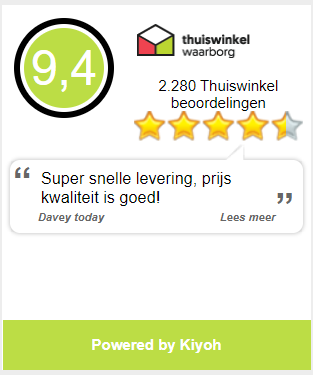How to defrost food safely and evenly with sous vide
Defrosting food with sous vide: A safe, fast, and efficient method
Forgot to thaw your chicken? Need to defrost steak in time for dinner? No problem. One of the most convenient (and underrated) uses of sous vide is defrosting frozen food, quickly, safely, and without compromising texture or flavor.
Unlike microwaves or countertop thawing, sous vide uses precise, controlled temperatures to gently defrost your food in a vacuum-sealed bag. This not only speeds up the process, but also keeps your ingredients safe from bacterial growth and ready for cooking or seasoning immediately after.
Whether you're planning a last-minute meal or just want to prep smarter, sous vide defrosting is a game-changer for home cooks and meal preppers alike.
Why sous vide is perfect for defrosting food
Gone are the days of worrying whether you remembered to thaw dinner. With sous vide defrosting, you can safely and quickly thaw frozen meats, fish, and more, directly in the water bath. This method delivers:
- Speed: Much faster than fridge thawing (which can take 12–24 hours)
- Texture integrity: No hot spots or partial cooking like microwaves can cause
- Convenience: Just seal and submerge, no monitoring or guesswork
How to defrost food using sous vide: Step-by-step guide
Defrosting food with sous vide is a safe, gentle, and efficient alternative to using a microwave or leaving food out on the counter. It uses the precise control of warm water circulation to thaw frozen foods evenly without partially cooking them.
Here’s exactly how to do it, step by step:
Step 1: Choose your defrosting temperature
For defrosting only (not cooking yet), set your sous vide device to a temperature between 25°C and 40°C. This range is warm enough to speed up thawing without initiating the cooking process.
- 25°C–30°C is ideal for thinner items like steaks, fish fillets, or chicken breasts.
- 35°C–40°C can be used for larger or denser items like bone-in roasts or whole chickens, as long as you don't leave them too long.
This range is well below the sous vide “cooking zone” and below the food safety risk zone when used for limited time (under 2 hours).
Avoid going above 40°C (104°F) unless you're planning to cook directly after defrosting.
Step 2: Place your frozen, vacuum-sealed bag directly in the water bath
No need to remove or open the bag. Sous vide defrosting works best when the food is:
Already vacuum-sealed or tightly packed in a freezer-safe ziplock bag
Submerged entirely in the circulating water
Make sure there are no air pockets and that the food is not floating, as this could lead to uneven thawing.
If needed, use sous vide magnets or clips to secure the bag underwater.
Step 3: Time it right, how long to defrost?
Defrosting time depends on the size and thickness of the food. Here are general guidelines:
| Food Item | Approx. Thickness | Sous Vide Defrost Time |
| Chicken breast | 2–3 cm | 30–45 minutes |
| Steak or pork chop | 3–4 cm | 45–60 minutes |
| Fish fillets | 2 cm | 20–30 minutes |
| Bone-in roast | 5–8 cm+ | 1.5–2 hours |
Tip: You can gently press on the item (without opening the bag) to check softness. Once the center feels thawed but still cool, you’re done.
Step 4: Ready to cook? Increase the temperature
If you're planning to cook immediately after defrosting, there’s no need to remove the bag. Simply:
- Increase your sous vide device to the target cooking temperature (e.g., 55°C for steak, 65°C for chicken).
- Keep the bag submerged and begin the cooking time as usual (you do not count the defrost time as part of the cooking time).
This “defrost-then-cook in one bag” method is efficient, mess-free, and eliminates cross-contamination.
Bonus: Can you cook straight from frozen without defrosting?
Yes! One of the biggest benefits of sous vide is the ability to cook food directly from frozen. Just add an extra 30–60 minutes to your standard cooking time. This works well for:
- Steaks
- Pork chops
- Chicken breasts
- Sous vide-prepped frozen meals
The water bath will gradually defrost and then cook the food in a seamless process.
Important food safety tip: Use proper packaging
If your frozen food is in its original store-bought vacuum packaging, especially in the case of fish, consider re-bagging before sous vide defrosting or cooking. Some commercial packaging is not designed to be heated and may release unwanted chemicals.
For fish, also be aware of anaerobic bacteria (like Clostridium botulinum) that can thrive in vacuum-packed environments. Always cook fish immediately after defrosting and avoid long-term cold storage in vacuum-sealed bags unless frozen.
Cooking from frozen vs. defrosting first: What’s better for sous vide?
One of the biggest advantages of sous vide cooking is that you don’t have to defrost your food before cooking. You can take vacuum-sealed meat, poultry, or fish straight from the freezer to the water bath. But is that always the best option?
Let’s explore the differences between cooking from frozen and defrosting first, so you can choose the method that works best for you.
Cooking straight from frozen (no defrosting)
This method is incredibly convenient and often delivers excellent results, especially when you're in a rush or batch cooking frozen meals.
Pros:
- No thawing needed, saves time and effort
- No food safety concerns if bag remains sealed
- Works well for most proteins: chicken, steak, fish, pork
How to do it:
- Use your regular sous vide temperature
- Add 30 to 60 extra minutes to the usual cooking time
- Make sure the food is properly vacuum sealed
Best for:
- Weeknight meals
- Sous vide meal prep
- Cooking multiple frozen portions at once
Defrosting first before cooking
While cooking from frozen is convenient, defrosting with sous vide gives you more flexibility, especially for seasoning and texture control.
Pros:
Allows seasoning or marinating after thawing
More control over browning and crust during searing
Ideal for larger or unevenly frozen items
Safer for certain foods like fish (reduce risk of botulism if bag is changed)
Best for:
When you want to season or spice food after thawing
Fish or seafood (re-bagging is safer)
Large roasts or bone-in cuts that may thaw unevenly
Which is better?
Both methods are valid and safe with sous vide. Here’s a quick breakdown:
| Scenario | Best Method |
| Convenience & speed | Cook from frozen |
| Want to season or marinate | Defrost first |
| Cooking fish or seafood | Defrost + re-bag |
| Cooking large roasts | Defrost recommended |
| Cooking meal prep bags | Either works |
Choose the method that suits your recipe, timeline, and food type. Sous vide is flexible enough to handle both perfectly.
Is sous vide defrosting safe? Food safety explained
Food safety is a top priority when handling frozen and raw foods. Fortunately, sous vide is not just precise, it’s also one of the safest ways to defrost food when done correctly.
Why sous vide defrosting is safe
- The process uses precise temperature control, keeping food below the danger zone (40–60°C)
- You avoid uneven thawing and accidental cooking that often happens in the microwave
- The sealed bag prevents cross-contamination
- When paired with a quick ice bath or immediate cooking, it minimizes bacterial growth risks
Important safety tips to follow
1. Don’t leave food in the bath too long: Even at low temps, extended time can bring food into the “danger zone.” Keep defrosting time under 2 hours.
2. Use an ice bath before refrigerating: If you're not cooking the food right away, place the bag in an ice bath (50/50 ice and water) for 20–30 minutes before refrigerating. This rapidly brings the temperature down for safe storage.
3. Re-bag fish or seafood: Vacuum-packed fish can support the growth of anaerobic bacteria like Clostridium botulinum. To stay safe:
- Open the store packaging
- Rinse the fish (optional)
- Re-seal it in a new vacuum bag or high-quality zip-top bag
- Cook immediately after defrosting
4. Keep equipment clean: Always clean your sous vide container and circulator between uses to avoid bacterial build-up, especially after handling raw meat or fish.
Final tip: Use a thermometer if unsure
If you’re defrosting a very thick or dense item, check the internal temperature by removing the bag and inserting a food thermometer into the center. It should be at or just below fridge temp (0–4°C) before refrigerating or seasoning.
Check the best thermometers here
Conclusion: Sous vide isn’t just for cooking—it’s the smartest way to defrost
If you’ve ever struggled with uneven microwave thawing, long fridge waits, or the food safety risks of countertop defrosting, sous vide is your new best friend. It offers a faster, safer, and more controlled way to defrost frozen meat, fish, and even pre-cooked meals, all while keeping flavor and texture intact.
Whether you’re just defrosting, or planning to cook straight from frozen, sous vide gives you total flexibility. Plus, it fits seamlessly into any meal prep or weeknight routine.
Key takeaways:
- Sous vide defrosting works best at 25–40°C
- Great for safely thawing steaks, chicken, fish, and more
- Ideal for last-minute cooking or prepping ahead
- You can also cook food directly from frozen, just add extra time
- Always chill or cook immediately after thawing to stay food-safe
Ready to level up your kitchen routine?
Discover our full range of Sous vide sticks, Vacuum Sealers, and Meal Prep vacuum Bags to make thawing, cooking, and storing your food easier than ever.
Looking for inspiration? Browse our Sous Vide Recipe Collection for dishes you can cook from frozen or prepare in advance.



